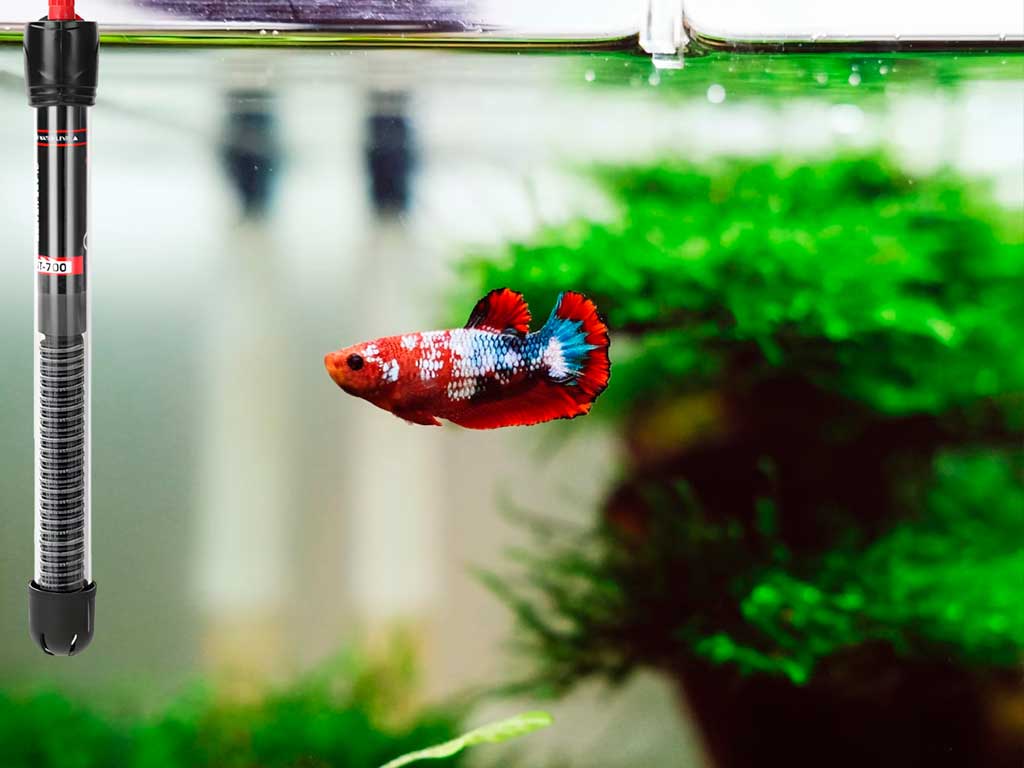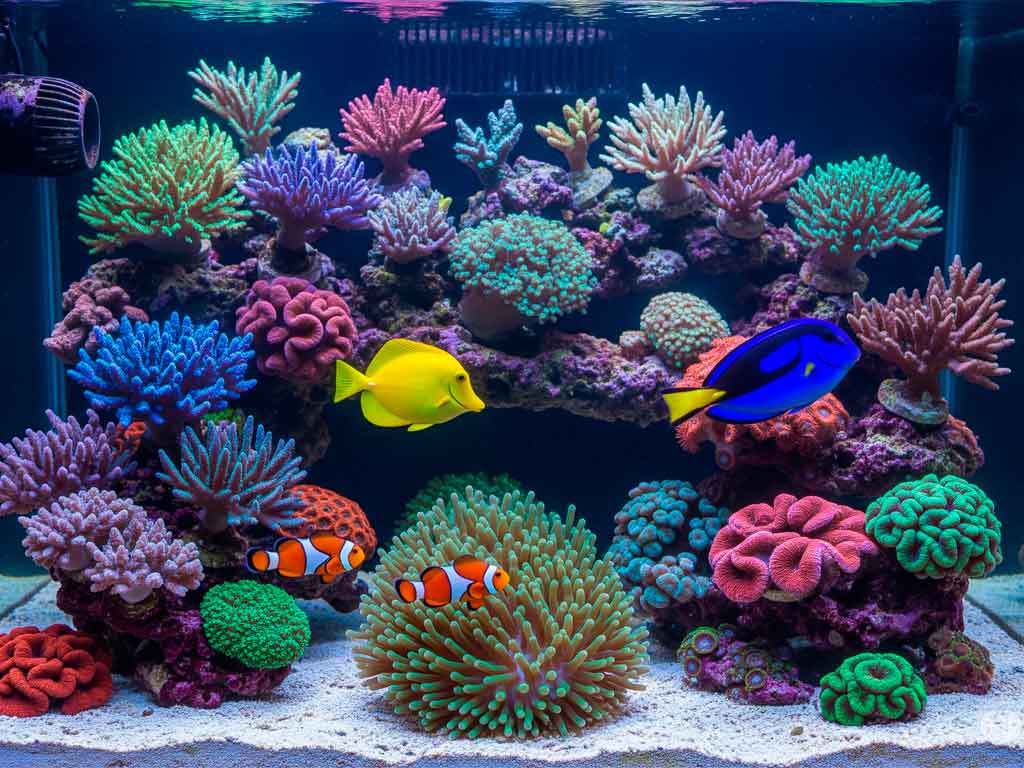Maintaining a constant and adequate temperature is essential for the health of fish and plants in an aquarium. Temperature influences the metabolism of fish, their immune system, and the growth of aquatic plants. An incorrect temperature can cause stress, illness, and in extreme cases, death of aquarium inhabitants.
Benefits of Using Heaters and Thermometers
Using heaters and thermometers in your aquarium allows you to precisely control and monitor the water temperature. Heaters ensure the water stays in the right temperature range for your fish and plants, while thermometers help you check and adjust the temperature as necessary.
Types of Aquarium Heaters
- Submersible Heaters: Are the most common and are placed directly into the aquarium water. They are easy to install and adjust, and come in various sizes and wattages to suit different types of aquariums.
- Bottom Heaters: are placed under the aquarium substrate. They are ideal for planted aquariums as they help distribute heat evenly throughout the aquarium, promoting healthy plant growth. Installation is simple. You just have to place the heating cable on the glass at the bottom of the aquarium in a geometric pattern, and secure it with the included suction cups. Due to the effect of the heater, the hot water rises to the top of the aquarium and the colder water flows again, allowing greater circulation of water in the substrate, which acts as the aquarium’s natural filter.
- Online Heaters: are installed in the aquarium filtration system, heating the water as it passes through the filter. They are less visible inside the aquarium and can be more energy efficient.
- Rock Heaters: Are designed to look like natural rocks and blend easily into the aquarium landscape. They provide constant heat and are an aesthetic option for those looking to maintain a natural aquarium.
How to Choose the Right Heater
- Aquarium Size: The size of the aquarium is a crucial factor when choosing a heater. Heaters come with aquarium size recommendations, and it is important to follow these recommendations to ensure adequate heating of the water.
- Type of Fish and Plants: Different species of fish and plants have different temperature needs. Research the specific needs of your aquarium inhabitants and choose a heater that can keep the temperature in the appropriate range.
- Desired Temperature Range: Choose a heater that has an adjustable temperature range that matches your aquarium’s needs. Some heaters come with a built-in thermostat that makes it easy to set and maintain the desired temperature.
- Security Features: Look for heaters with safety features like automatic shut-off in case of overheating or if the water level gets too low. These features can prevent accidents and ensure a safe environment for your fish and plants.
Tips for Proper Location
Place the heater near the filter outlet to ensure even heat distribution. Avoid placing the heater directly in the water stream to prevent temperature fluctuations.
Maintenance of Aquarium Heaters
- Regular Cleaning: Clean the heater regularly to prevent the buildup of algae and other debris. Use a soft brush and warm water to clean surfaces without damaging components.
- Component Inspection: Regularly check the heater components, including the cord and thermostat, to ensure there is no damage or wear. Replace any defective components immediately.
How to Avoid Overheating
Make sure the heater is properly adjusted and does not exceed the recommended temperature for your aquarium. Monitor the temperature regularly to detect any problems in time.
If the heater is not heating properly, check the power source and thermostat. If it still does not work, the heater may need to be replaced.
Monitor aquarium temperature
Monitoring aquarium temperature is essential to maintaining a healthy environment. Thermometers allow you to check that the temperature is in the proper range and make adjustments as necessary.
Types of Aquarium Thermometers
- Sticky Thermometers: Sticky thermometers are placed on the outside of the aquarium and are easy to read. They are a cheap and convenient option, although they may be less accurate than other types.
- Glass Thermometers: Glass thermometers are immersed in water and are usually very accurate. They come in various shapes and sizes and are a popular choice for many aquarists.
- Digital Thermometers: Digital thermometers offer accurate and easy-to-read readings. Some models include alarms that activate if the temperature deviates from the desired range.
- Floating Thermometers: Floating thermometers sit on the surface of the water and are easy to move and adjust. They are useful for large aquariums or for monitoring the temperature in different areas of the Aquarium.
Frequently Asked Questions about Aquarium Heaters and Thermometers
What is the ideal temperature for an aquarium?
The ideal temperature varies depending on the type of fish and plants. Generally, most tropical aquariums are kept between 24-28°C.
How often should I check the aquarium temperature?
It is advisable to check the temperature daily to make sure it stays within the proper range.
Is it necessary to have both a heater and a thermometer?
Yes, both are essential. The heater regulates the temperature, while the thermometer allows you to monitor and make sure the heater is working properly.
What to do if the heater breaks?
Turn off and unplug the heater immediately. Replace it as soon as possible to avoid temperature fluctuations in the aquarium.
What are the best thermometers for small aquariums?
Stick-on and glass thermometers are inexpensive and easy-to-use options for small aquariums.
How to avoid temperature fluctuations in the aquarium?
Use a reliable heater and an accurate thermometer. Make gradual adjustments and monitor the temperature regularly.
With the information and advice provided in this guide, you can ensure that the temperature of your aquarium remains stable and adequate, promoting the health and well-being of all its inhabitants.










